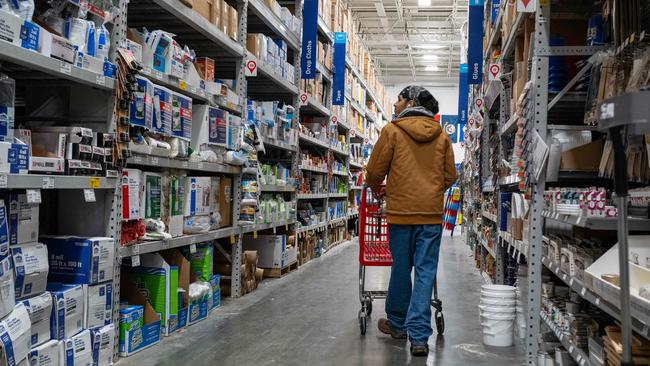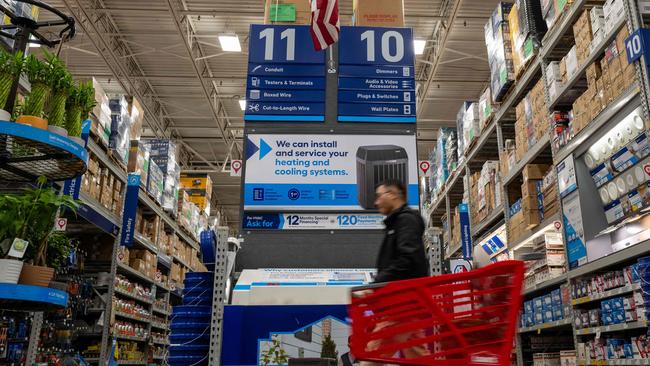What recession? Growth ended up accelerating in 2023
The US economy grew 3.1 per cent over the last year as strong consumer spending and hiring upended recession fears.

The recession never showed up in 2023. Consumers made sure of it.
The US economy grew 3.1 per cent over the past year, the Commerce Department said Thursday. A resilient labour market supported strong consumer spending and brushed aside a feared downturn. A year ago economists saw a recession as very likely and projected anemic 0.2 per cent growth for the year. Instead, last year’s gain was a sharp pickup from a comparable 0.7 per cent advance in 2022.
The year was capped by a fourth quarter in which the economy grew at a 3.3 per cent seasonally and inflation-adjusted annualised pace, fueled by household and government spending. The quarterly reading was a slowdown from the summer’s 4.9 per cent pace but still a healthy rate.
“It’s been a really strong year for economic growth,” said James Knightley, chief international economist at ING. “The consumer was meant to roll over - and they didn’t.”
The expansion is expected to continue in 2024, albeit at a significantly slower pace. With inflation moderating, the Federal Reserve is likely to shift toward interest-rate cuts which would support the economy this year, economists say. But that buoyancy could be challenged by slower hiring and increased strain on Americans who have spent down pandemic-era savings.
The 3.1 per cent annual GDP growth shows the seasonally adjusted fourth-quarter change from a year earlier. Economists surveyed by The Wall Street Journal and the Fed use that metric for forecasts.
Coming in for soft landing
The final three months of the year looked a lot like the soft landing Fed officials are seeking to achieve. Growth was strong, employers added nearly a half-million jobs and inflation cooled to an annualized 1.7 per cent rate, below the Fed’s 2 per cent target.
Fed officials are on track to hold rates steady at a 23-year high at a meeting next week and have penciled in three rate cuts for 2024.
Much of the credit for better-than-expected growth goes to free-spending consumers who have not turned off the tap. They spent more on healthcare, dining out and cars in 2023. Holiday sales beat expectations. Spending on housing was flat on an inflation-adjusted basis over the prior year, reflecting a tough environment for home sales - but also stabilisation. Private residential investment dropped 17 per cent in 2022.

Confidence in the economy rose as wage growth exceeded price increases: Consumer sentiment surged 29 per cent from November into January, the biggest two-month increase since 1991, the University of Michigan said. Consumers expect inflation to be much tamer than they thought only a few months ago.
Consumer products giant Procter & Gamble reported strong earnings on Tuesday that reflected growth from both price increases and higher sales volumes. Airlines, including Delta and JetBlue, reported good holiday travel seasons.
The year’s growth was also supported by a jump in government spending, especially at the state and local level, and a boost from international trade. Business investment rose at a somewhat slower pace in 2023 versus the prior year.
Signs of stress
Still, there are signs that spending - and the whole economy - won’t be able to continue at such a rapid clip. Economists, expecting consumer outlays to cool, forecast growth to ease to 1 per cent this year.
The four biggest US banks reported higher credit-card spending in 2023 compared with the previous year and said that customers are taking longer to pay off balances. Delinquency rates are rising. The personal saving rate fell further in the fourth quarter to 4 per cent - it rarely fell below 5 per cent in the decade before the pandemic.
“Consumers have used run-ups in debt and failing to save and invest in the future” to prop up their spending, said Amy Crews Cutts, chief economist at AC Cutts & Associates. “It’s going to take them a while to dig out.”
Zachary Neeley, 25, began an after-school tutoring venture in Sugar Land, Texas, during the pandemic and turned it into a registered business last year. He saw early growth and was able to hire contractors to serve as math and English tutors, and planned more offerings like multisession boot camps and standardised-test preparation.
Some of those expansion plans, including the possibility of hanging a shingle at a physical storefront, have been put on hold due to uncertainty about demand over the next several months. While clients say they have been satisfied with the service, some have mentioned to Neeley that they view tutoring as an unaffordable extra.
Tutoring is “a thing that’s going to get cut when people are doing their budgets”, he said, adding that he remained optimistic about the longer-term outlook for his business and its expansion plans.
Other signs of a slowing, though not crashing, economy have emerged. Manufacturers reported a modest drop in production in recent months, and some large companies have announced layoffs.
Businesses are uncertain of how much pricing power they retain after years of steady increases that have been absorbed by customers. For some food and snack companies, including Conagra, the volume of purchases has slowed, and they are starting to cut prices on some items.
Help on the way?
The prospect that the Fed could lower interest rates in the not-too-distant future fueled a stock-market rally in recent months, and cheaper financing costs could reinvigorate household and business investment later this year. The gradual cooling of the labour market combined with progress on taming inflation has investors watching for when the Fed might begin to cut its benchmark interest rate.
Most investors expect the Fed to begin lowering rates starting at its May meeting, according to CME Group data.
Falling mortgage rates are leading to increases in housing activity following the worst year for home sales in decades. Mortgage purchase applications rose in the week ended January 12 to the highest seasonally adjusted level since July, according to the Mortgage Bankers Association.
Though Fed officials have said they don’t want to cut rates until they are convinced that price pressures have been durably suppressed, markets have turned their attention to the possible growth that might follow.
“If the Fed wants to pull off a soft landing, it will need to ease monetary policy this year, ” said Ryan Sweet, chief US economist at Oxford Economics.
- The Wall Street Journal



To join the conversation, please log in. Don't have an account? Register
Join the conversation, you are commenting as Logout